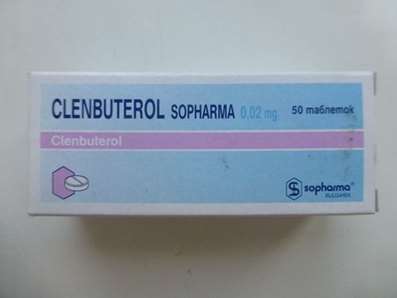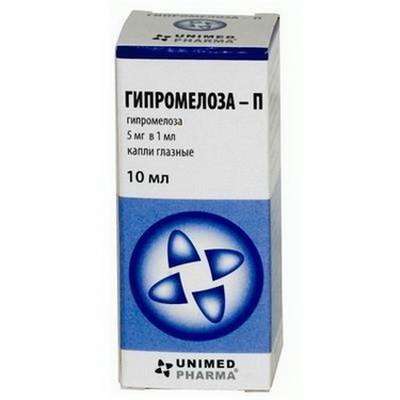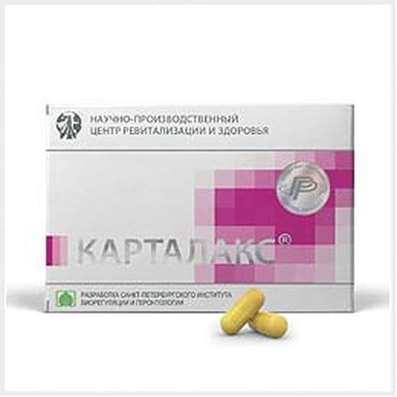Instruction for use: Pindolol
I want this, give me price
Trade name of the drug Ė Visken
The Latin name of the substance Pindolol
Pindololum (genus. Pindololi)
Chemical rational name: 1- (1H-Indol-4-yloxy) -3 - [(1-methylethyl) amino] -2-propanol
Gross formula C14H20N2O2
Pharmacotherapeutic group: Beta-blockers
The nosological classification (ICD-10)
G25.0 Essential tremor: shake; Generalized muscle tremors; Essential tremor family; essential tremor; Tremor idiopathic; Tremor idiopathic benign; Tremor hereditary; Essential tremor is benign
I10 Essential (primary) hypertension: hypertension; Arterial hypertension; Arterial hypertension crisis course; Essential Hypertension; Essential hypertension; Essential hypertension; Essential hypertension; Essential hypertension; Primary hypertension; Arterial hypertension, complications of diabetes; The sudden increase in blood pressure; Hypertensive disorders of blood circulation; hypertensive condition; hypertensive crises; arterial Hypertension; malignant Hypertension; Hypertonic disease; hypertensive crises; accelerated hypertension; malignant hypertension; The aggravation of hypertensive disease; Transient hypertension; Isolated systolic hypertension
I15 Secondary hypertension: Arterial hypertension, complications of diabetes; hypertension; The sudden increase in blood pressure; Hypertensive disorders of blood circulation; hypertensive condition; hypertensive crises; hypertension; arterial Hypertension; malignant Hypertension; hypertensive crises; accelerated hypertension; malignant hypertension; The aggravation of hypertensive disease; Transient hypertension; hypertension; Arterial hypertension; Arterial hypertension crisis course; renovascular hypertension; Hypertension symptomatic; Renal hypertension; Renovascular hypertension; renovascular hypertension; Symptomatic hypertension
I20 Angina [angina]: Heberden disease; Angina pectoris; The attack of angina pectoris; recurrent angina; Spontaneous angina; Stable angina pectoris; Angina rest; Angina progressing; Angina mixed; Angina spontaneous; stable angina; Chronic stable angina; Angina Syndrome X
I34.1 prolapse [prolapse] mitral valve: Rupture of papillary muscle; Barlow syndrome; Mitral valve prolapse syndrome; Mitral valve prolapse
I42 Cardiomyopathy: cardiopathy; diffuse cardiomyopathy; Diffuse neobliteriruyuschaya cardiomyopathy; myocardial Gipokaliygistidii; myocardiodystrophy; Acute cardiomyopathy; Chronic cardiomyopathy
I47.1 Supraventricular tachycardia: Supraventricular paroxysmal tachycardia; supraventricular tachyarrhythmia; supraventricular tachycardia; Supraventricular arrhythmias; Supraventricular paroxysmal tachycardia; supraventricular tachyarrhythmias; supraventricular tachycardia; Neurogenic sinus tachycardia; orthodromic tachycardia; Paroxysmal supraventricular tachycardia; Paroxysm of supraventricular tachycardia; Paroxysm of supraventricular tachycardia with WPW-syndrome; Paroxysm of atrial tachycardia; Paroxysmal supraventricular tachyarrhythmia; Paroxysmal supraventricular tachycardia; Politopnye atrial tachycardia; Atrial fibrillation; Atrial tachycardia is true; Atrial tachycardia; Atrial tachycardia with AV block; reperfusion arrhythmias; Reflex Bertsolda-Jarisch; Recurrent sustained supraventricular paroxysmal tachycardia; Symptomatic ventricular tachycardia; Sinus tachycardia; Supraventricular paroxysmal tachycardia; supraventricular tachyarrhythmia; supraventricular tachycardia; supraventricular arrhythmia; supraventricular arrhythmias; Tachycardia of AV connections; supraventricular tachycardia; Tachycardia orthodromic; sinus tachycardia; The nodal tachycardia; Chaotic atrial tachycardia politopnye; Wolff-Parkinson-White
I48 Atrial fibrillation and flutter: Permanent atrial tachyarrhythmias; Relief frequent ventricular rate during atrial flutter or blink; atrial fibrillation; Paroxysm of atrial fibrillation and flutter; Paroxysm of atrial fibrillation; Paroxysmal atrial fibrillation; Atrial premature beats; Tahiaritmicheskoy atrial fibrillation; Tahisistolicheskoy atrial fibrillation; auricular flutter; Life-threatening ventricular fibrillation; Atrial fibrillation; Chronic atrial fibrillation; supraventricular arrhythmia; Paroxysmal atrial fibrillation and flutter; Paroxysmal fibrilloflutter; Atrial premature beats
I49.1 Premature atrial depolarization: supraventricular arrhythmia; supraventricular arrhythmia; supraventricular arrhythmias; supraventricular arrhythmias; supraventricular arrhythmias; supraventricular beats; atrial premature beats
I49.4 Other and unspecified premature depolarization: extrasystole arrhythmia; extrasystole; extrasystole unspecified
I49.9 Irregular heartbeat, unspecified: Paroxysmal supraventricular tachycardia; extrasystole arrhythmia; Atrial fibrillation tachysystolic; supraventricular tachyarrhythmia; supraventricular arrhythmias; AV reciprocating tachycardia; AV-nodal reciprocating tachycardia; ventricular fibrillation; Irregular heartbeat; Antidromic reciprocating tachycardia; Cardiac arrhythmias; Arrhythmias; Arrhythmia; Heart arythmy; Arrhythmia due to hypokalemia; ventricular tachyarrhythmias; The high frequency of ventricular contraction; Cardiac arrhythmias; Paroxysmal supraventricular arrhythmia; Paroxysmal supraventricular arrhythmia; Paroxysmal dysrhythmia; Paroxysmal atrial-ventricular rhythm; cardiac arrhythmias; supraventricular tachycardia; tachyarrhythmia; Precordial abnormal pulsation
CAS code 13523-86-9
Characteristic
White or off-white odorless powder. It is soluble in organic solvents and aqueous acid solutions.
Pharmacological Properties of Pindolol
Pharmachologic effect - antianginal, hypotensive, anti-arrhythmic.
Blocks beta1- and beta2-adrenergic receptors has intrinsic sympathomimetic and membrane stabilizing activity. Stops central sympathetic impulses, reduces the sensitivity of peripheral tissues to catecholamines and renin secretion. It slows heart rate, lowers cardiac output, systemic vascular resistance, a garden, and the rate of spontaneous excitation of the sinus and ectopic pacemakers. Reduces heart and myocardial oxygen consumption. Corrects aggressive behavior. It lowers intraocular pressure in open angle glaucoma (topical application solution). No effect on lipid metabolism. The hypotensive effect develops after 1 week and reaches its maximum within 4-6 weeks.
Quickly and completely (more than 95%) absorbed from the digestive tract, bioavailability - 87%. Cmax achieved within 1 h. At 40% bound to plasma proteins and adsorbed on erythrocytes. The volume of distribution - 3.2 l / kg. It penetrates through the blood-tissue barriers, including GEB and placental secreted into breast milk. T1 / 2 is 3-4 hours (in liver cirrhosis - 2,5-30 hours, renal dysfunction - 3-11,5 hours, in old age - 7-15 hours). Excreted in the urine in unchanged form (35-40%) in the form of glucuronide and sulphate (60-65%). In patients with renal insufficiency T1 / 2 and the volume of distribution depend on the degree of renal dysfunction, so if Cl creatinine less than 20 mL / min for at least 15% of the dose is excreted in the urine in unchanged form.
In experimental studies, when administered to rats and rabbits doses of 50 and 100 times the maximum recommended for the person, for 2 years found no evidence of carcinogenicity. At a dose of 10 mg / kg had no effect on fertility and reproductive performance in rats. At doses of 30-100 mg / kg inhibits spermatogenesis and increases the frequency of prenatal fetal death.
Application of the substance Pindolol
Hypertension, angina, supraventricular arrhythmias (sinus tachycardia, atrial fibrillation tachysystolic, beats), hyperkinetic cardiac syndrome, hypertrophic cardiomyopathy, tremor (essential, senile), mitral valve prolapse.
Contraindications for Pindolol
Hypersensitivity, bronchial asthma, severe chronic heart failure, pulmonary heart, AV block II and III degree, hypotension (Sad below 100 mm Hg. Art.), Bradycardia (less than 45-50 u. / Min), sinus node weakness syndrome , pregnancy, breast-feeding.
Restrictions to application
Heart failure, AV block I degree, violations of liver and kidney function (including history), a tendency to bronchospasm, including chronic bronchitis, emphysema, acute phase of myocardial infarction, peripheral arterial circulatory disorders, hyperthyroidism, depression, psoriasis, diabetes, hypoglycemia, children's age (safety and efficacy of the children are not identified).
Pregnancy and breast-feeding
Contraindicated during pregnancy. At the time of treatment should stop breastfeeding.
Side effect of Pindolol
From the nervous system and sensory organs: insomnia (10%), dizziness (9%), fatigue (8%), anxiety (7%), increase in the number or the appearance of strange dreams (5%), fatigue (4%), paresthesia (3%), violation of orientation in time and space, depression, short-term amnesia, emotional lability, hallucinations, vision changes, discomfort in the eyes.
With the genitourinary system: edema (6%), less than 2% of cases - impotence, pollakiuria.
From the digestive tract: dyspepsia (4%), nausea (5%), diarrhea (2%), vomiting (2%), ischemic colitis, mesenteric thrombosis artery.
From the respiratory system: dyspnea (5%), chest pain (3%), laryngo and bronchospasm, respiratory distress syndrome.
Cardio-vascular system and blood (blood, hemostasis): less than 1% of cases - the heartbeat, heart failure, bradycardia, tachycardia, AV block, hypotension, syncope, intermittent claudication, cold extremities, agranulocytosis, thrombocytopenia, purpura.
From the musculoskeletal system: arthralgia (7%), myalgia (10%), muscle cramps (3%).
Other: rash, erythematous rash, urticaria, reversible alopecia, weight gain.
Interaction
It increases the likelihood of violations of all functions of the heart and the risk of hypotension in the background amiodarone, diltiazem, verapamil (especially in / in the introduction), drugs quinidine series. The joint appointment with clonidine possible dysregulation of blood pressure, with agonists (amphetamines, ephedrine, epinephrine, norepinephrine, phenylephrine, pseudoephedrine) - increase risk of hypertension and bradycardia with reserpine - probability of AV block, with phenothiazines - strengthening hypotension with NSAIDs - the weakening of antihypertensive effect; cimetidine increases the concentration in plasma. Appointment on the background of stimulants beta-adrenergic receptors, and xanthine derivatives leads to mutual suppression effects. Incompatible with MAO inhibitors (mutual weakening effects). Inhibits lidocaine metabolism in the liver, increases the level of thioridazine in the blood, potentiates the action of non-depolarizing muscle relaxants.
Overdose
Symptoms: bradycardia, hypotension, heart failure, bronchospasm.
Treatment: gastric lavage and the appointment of adsorbents, monitoring vital functions, symptomatic therapy: in severe bradycardia - atropine; heart failure - cardiac glycosides, diuretics, glucagon, hypotension - vasopressors (epinephrine, etc.), under the control of blood pressure (blood pressure); bronchospasm - isoproterenol or theophylline derivatives; AV blockade - transvenous pacing; sedation (diazepam).
Routes of administration
Inside.
Precautions for substance Pindolol
It is necessary to bear in mind the possibility of disguising of clinical manifestations of hyperthyroidism (tachycardia) and hypoglycemia (tachycardia, changes in blood pressure). It increases the duration and severity of anaphylactic reactions to allergens. Perhaps the increased severity of hypersensitivity reactions and the lack of effect of conventional doses of epinephrine with aggravated allergic history. When pheochromocytoma should not be used without an additional injection of alpha-blockers. When combined with alcohol can orthostatic collapse. It reduces the compensatory cardiovascular reactions in response to the use of general anesthetics and iodine-containing contrast agents. In just a few days before surgery with general anesthesia is necessary to cancel or choose an anesthetic with the least negative inotropic effect. In order to prevent the development of withdrawal syndrome receiving end gradually in about 2 weeks. Do not interrupt or finish treatment without consulting a doctor. Be wary of during the drivers of vehicles and people skills relate to the high concentration of attention.
Special instructions
You can change the parameters in laboratory tests.

 Cart
Cart





